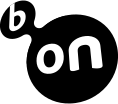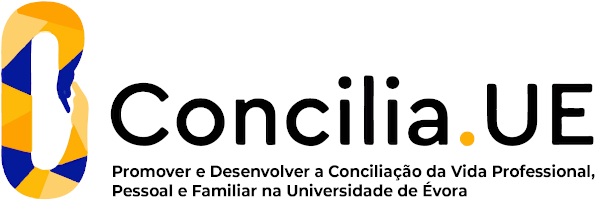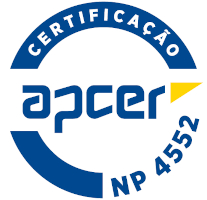2024
Human Anatomy and Physiology I
Name: Human Anatomy and Physiology I
Code: CMS14446L
6 ECTS
Duration: 15 weeks/156 hours
Scientific Area:
Health Sciences
Teaching languages: Portuguese
Languages of tutoring support: Portuguese, English
Regime de Frequência: Presencial
Presentation
This UC contributes, through its programmatic contents, to the understanding of the concepts explaining the organization of the human body, processes of synthesis and tissue repair and human anatomy and physiology.
Sustainable Development Goals
Learning Goals
Objectives
? Analyze the explanatory concepts of the organization of the human body.
? Analyze processes of tissue repair and synthesis.
? Analyze elements of anatomy and human physiology.
Competences
? Understands the processes of tissue synthesis and repair;
? Applies concepts of organization of the human body;
? Describes the anatomy of the human skeleton;
? Explicits human myology;
? Applies the principles of passive and active human anatomy in understanding the functional anatomy;
? Understand adjustment and maintenance systems.
? Analyze the explanatory concepts of the organization of the human body.
? Analyze processes of tissue repair and synthesis.
? Analyze elements of anatomy and human physiology.
Competences
? Understands the processes of tissue synthesis and repair;
? Applies concepts of organization of the human body;
? Describes the anatomy of the human skeleton;
? Explicits human myology;
? Applies the principles of passive and active human anatomy in understanding the functional anatomy;
? Understand adjustment and maintenance systems.
Contents
Module I Organization of the Human body
Topographic anatomy.
Histology.
Integumentary system.
Module II Osteology and Arthrology
Axial and appendicular skeleton;
Arthrology: classification and articular elements.
Module III Myology, functional and surface anatomy
Muscle tissue.
Myology of the head.
Myology of the neck.
Myology of the back.
Myology of thorax.
Myology of the abdomen.
Myology of the upper extremity.
Myology of the lower extremity.
Functional anatomy of the spine.
Functional anatomy of thorax.
Functional anatomy of the upper extremity.
Functional anatomy of the lower extremity.
Surface anatomic references of the head, neck, torso and limbs.
Posture and gait.
Module IV Adjustment and Maintenance Systems
Blood tissue.
Lymphatic system.
Circulatory system.
Respiratory system.
Topographic anatomy.
Histology.
Integumentary system.
Module II Osteology and Arthrology
Axial and appendicular skeleton;
Arthrology: classification and articular elements.
Module III Myology, functional and surface anatomy
Muscle tissue.
Myology of the head.
Myology of the neck.
Myology of the back.
Myology of thorax.
Myology of the abdomen.
Myology of the upper extremity.
Myology of the lower extremity.
Functional anatomy of the spine.
Functional anatomy of thorax.
Functional anatomy of the upper extremity.
Functional anatomy of the lower extremity.
Surface anatomic references of the head, neck, torso and limbs.
Posture and gait.
Module IV Adjustment and Maintenance Systems
Blood tissue.
Lymphatic system.
Circulatory system.
Respiratory system.
Teaching Methods
Methodologies aim to produce learning and form autonomous students in the formative processes. Strategies of transmission of content are associated with discussion and analysis of proposed issues, articulating the knowledge of anatomy and physiology with its clinical and conceptual for nursing. Strategies with skills development include the production of texts, presentations and classroom discussions. The students orientation is focused on analyzing problem situations proposed. Skills of writing and speaking are developed in parallel with the acquisition of knowledge.
Assessment
Article 110 of the Academic Regulations defines the rules for student assessment.
In continuous assessment: 2 individual theoretical tests (PT), lasting 100 minutes (80%), carried out in person, via the MOODLE platform and 2 moments of theoretical-practical performance (20%). The theoretical-practical performance (TP) is assessed using a recording grid of which the students have prior knowledge. The final grade is obtained from the weighted average of the marks obtained in each of the above tests. The minimum pass mark is 9.5.
In the final assessment system, points 6, 11 and 12 of article 110 of the Academic Regulations will be taken into account, and will take place during the established final assessment period. In this sense, the student can opt for the final assessment regime (individual test, 120 min).
In continuous assessment: 2 individual theoretical tests (PT), lasting 100 minutes (80%), carried out in person, via the MOODLE platform and 2 moments of theoretical-practical performance (20%). The theoretical-practical performance (TP) is assessed using a recording grid of which the students have prior knowledge. The final grade is obtained from the weighted average of the marks obtained in each of the above tests. The minimum pass mark is 9.5.
In the final assessment system, points 6, 11 and 12 of article 110 of the Academic Regulations will be taken into account, and will take place during the established final assessment period. In this sense, the student can opt for the final assessment regime (individual test, 120 min).
Teaching Staff
- José Manuel Afonso Moreira [responsible]
- Maria José Abrantes Bule





















